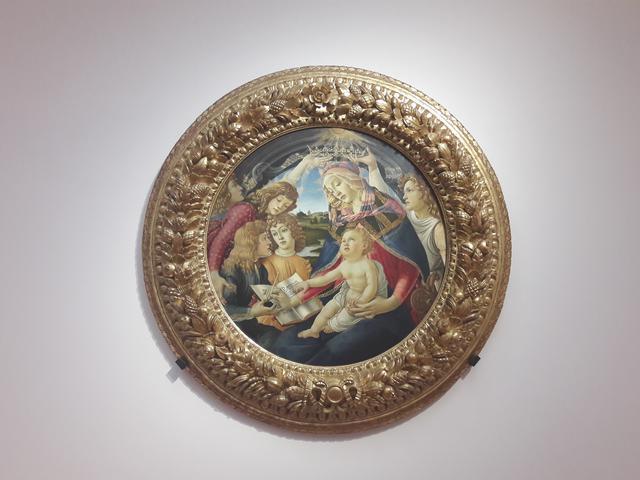Virgin of the Magnificat

The Virgin Mary, crowned by two angels, is represented on a throne. Under her son's guidance, she is writing the song "Magnificat anima mea Dominum" (My soul magnifies the Lord), which gives the painting its title. Jesus is sitting on his mother's lap. He is touching a pomegranate, a fruit with many symbolic meanings, and whose red seeds remember the blood shed by Jesus to save humanity. The scene takes place before a window that opens onto a bright and calm country landscape; Above, Serena's stone frame creates a division between the realm of heaven and earth. The religious theme becomes almost temporal in the graceful, elegant hairstyles of Mary and the angels, who, as in Botticelli's other works, lack wings. The Virgin's blonde hair with a shiny gold finish is covered by transparent veils under a richly decorated maphorion, while the hairstyles and clothing of the angels are based on the fashions followed by the scions of the rich Florentine families of the late 15th century. . The originality of the work, together with the sophisticated elegance of the clothing and hair, and the grace of Mary's absorbed expression, have made Botticelli's invention known over the years, whose figures embody an ideal of beauty that was highly appreciated. During the 20th century.
We do not know the original destination of the painting, which was purchased from a private collection in 1784. Round paintings were usually intended for the secular world in the Renaissance and, above all, for noble houses. They were often commissioned for weddings or births. However, in light of the painting's considerable size, it may have hung in one of the courts of the Florentine Republic, which were often decorated with sacred images.
© Tourblink